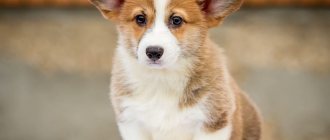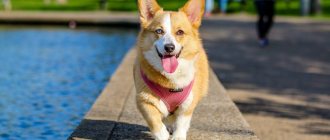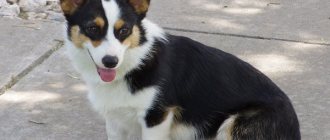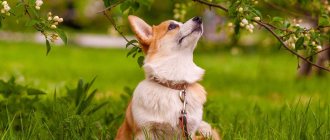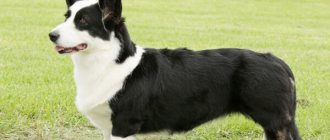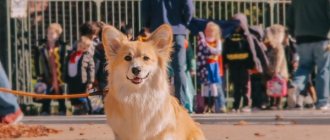Dogs have always played an important role in the life of royal courts. They are allowed to participate in ceremonies, guard, hunt, and simply sit on the throne with their owners. These animals often reflect the habits of their owners, demonstrating strength, wealth, luxury or devotion. They can also be a diplomatic gift that brings countries together.
There is evidence that even the ancient Egyptian pharaohs bred greyhounds, revering them as the best breed. But every ruler has his favorites.
Queen Victoria Spaniel Dash
Dog breeding among English monarchs has been practiced for a long time.
One of the first favorite breeds of the imperial court was the Beagle hunting dog. Their ancestors were probably brought to England by William the Conqueror after the Norman invasion in 1066. It was reported that King Henry VII of England kept “glove hounds” for hunting, that is, dogs so small that they could fit in the palm of his hand. Toy spaniels, such as the Cavalier King Charles Spaniel, have been popular among royal families since Tudor times. But they especially attracted the attention of the Stuart dynasty, for example, Charles II. They are also depicted in many royal portraits and paintings.
In the 19th century, Queen Victoria's favorite pet was her tricolor spaniel Dash, given to her as a teenager. The dog became for the girl, brought up in strictness, the only childhood friend and the first in a series of small dogs. When he died, his epitaph read: “Here lies Dash, Her Majesty Queen Victoria's favorite spaniel in his tenth year. His affection was without selfishness. His playfulness was without malice. His loyalty was without deception. Reader, if you would like to be loved and die mourned, take your example from Dash." Later, Victoria started a whole kennel that included pugs, poodles, terriers, dachshunds and other small breeds of dogs.
George VI, the father of Britain's current Queen Elizabeth II, on the other hand, loved large hunting dogs, including Labrador retrievers. He began breeding them at the royal estates of Sandringham and Balmoral in 1911 and treated them not only as work animals, but also as pets. Since then, Labradors have become part of the royal house of hunting dogs and have received many awards for their skill.
History of the breed.
The dogs were apparently bred in Wales. According to the legends of English folklore, corgis were given to people by fairies. There are more plausible theories of the origin of this breed. In Old English, "cur" means "to guard" or "to care for." The Welsh Corgi is the oldest English breed of dog. The sources found say that corgis were dogs that herded cows. Their small size allowed them to dodge the blows of cows and bulls. These dogs have always been highly valued. The ancestors of the breed are considered to be the Swedish Vallhund and the Icelandic dog. From these breeds the dogs received a long body and short legs. There are several subspecies of this breed: Pembroke and Cardigan. These breeds are considered different in narrow circles and breeders strive to avoid crossing them in order to preserve their individuality.
Welsh Corgis appeared in the English royal family in 1933 and immediately gained enormous popularity.
Nowadays it is very difficult to believe in the true purpose of these small dogs. They are very easy to care for, they are cheerful and good-natured, very smart and unpretentious in their maintenance.
Corgi Susan and her descendants
Elizabeth II herself prefers corgis, or rather the Pembroke Welsh Corgi breed.
These are hunting dogs from Wales, which are distinguished by their wayward character. Liz received her very first puppy, Susan, from her father when she came of age. Since then, the ruler kept several of these “fluffies” at once in her castles and residences, and since her coronation she has had more than thirty of them in total. There is a separate room in the palace known as the “Corgi Room” for the pets, and a special chef prepares their food. In 2002, Britain even issued a commemorative coin featuring the Queen and one of her dogs. True, there are no longer any purebred corgis, the descendants of Susan. The last was Willow, who died in 2022. But Elizabeth still has Candy, a cross between a corgi and a dachshund. In 2015, the Queen announced that she did not intend to breed any more pets. Due to her advanced age, she is afraid that she might trip over the dog and break an arm or leg. In addition, if a woman dies before her animals, there will be no one to look after them with the same affection and care.
Elizabeth's son, Charles, also loves dogs. Now he and Camilla have three Jack Russell dogs: Rosie, Tosca and Beth. The couple adopted them from a regular shelter. Prince William and his wife Catherine also had a pet. They got their cocker spaniel Lupo back in 2011. And fans registered a Twitter account on his behalf, which became quite popular. Lupo died in 2022, but according to insiders, the family has already found a new puppy of the same breed. Duchess Meghan and Prince Harry are keeping up with tradition: in 2022, they adopted a black Labrador, Pula. They also take care of the beagle that Megan got before the wedding. So this royal habit is unlikely to disappear any time soon.
Ten facts about royal corgis
Royal Corgis are the Pembroke Welsh Corgis that were owned by Queen Elizabeth II, her father, King George VI, and her mother, Queen Consort Elizabeth. One can only envy the lives of these cute fluffies:
Favorite dogs of the royal family:
- 1. Corgis will have complete freedom in the palace: they can run on expensive carpets and climb on antique furniture. It is forbidden for anyone to drive away a dog or even raise their voice at it. In case of “accidents,” cleaners wipe the puddles with special blotting paper.
- 2. Queen corgis are also travelers. The favorites even went on a voyage with Elizabeth II on her honeymoon.
- 3. The Queen does not tolerate jokes and practical jokes regarding her pets. From the book Amazing and Extraordinary Facts: The Lives of the Royal Family (2012), it is known that in 1999 a footman was demoted for adding whiskey and gin to the corgis' food in order to laugh at their changed gait.
The Queen loves dogs:
- 4. The Queen herself walks her pets after lunch around the grounds of Buckingham Palace. The morning walk is the responsibility of the footman.
- 5. There is a royal dynasty of Pembroke Welsh Corgis. It starts with Susan's puppy.
- 6. Corgis have their own quarters at Buckingham Palace - a spacious room with wicker beds. The sheets here, like in a luxury hotel, are changed every day!
- 7. Royal Corgis receive a gift from their owner every Christmas. Elizabeth II prepares stockings for them, which she generously fills with toys and treats.
It's not just corgis that live with the Queen:
- 8. Royal pets eat only natural food: steaks, chicken breast fillet. All dishes are made only from natural ingredients and prepared by the chef. Sometimes the queen personally poured gravy over the food before serving it to the dogs.
- 9. The royal corgis have their own cemetery - Sandringham Estate in Norfolk. The tradition of burying royal pets was started by Queen Victoria, who built the grave of her collie Noble here in 1887.
- 10. Royal corgis are not such peace-loving companions. In 1991, Elizabeth II received three stitches on her hand after she broke up a fight between ten of her favorites!
The path in the palace is open to dogs:
Yuri and the Asian four-legged subjects
The Akita Inu breed originated in Japan.
These large dogs with a proud character were favorites of the Japanese aristocracy for several centuries. In the 17th century they were used to protect the emperor and his loved ones. Only shoguns were allowed to own such dogs for hunting bears and other large animals. The breed was declared state and became available to ordinary citizens for breeding only at the beginning of the 20th century. Until now, these dogs are considered a national treasure of their country. The Japanese imperial family supports the custom of having pets. Thus, the young princess Aiko can often be seen in photos with the cute dog Yuri, whom she adopted from the shelter. The Chinese nobility preferred small dogs: Pekingese and Shih Tzu. The very name “Pekingese” suggests that the breed comes from Beijing. The first mention of it can be found in the 8th century. Initially, these were palace dogs; they were considered a symbol of happiness and served to protect against evil spirits. Up to 200 Pekingese lived at the same time at the imperial court. Special eunuchs were engaged in their breeding, and the concubines fed the puppies with their milk. In 1860, five dogs of this breed came to England as trophies. So the Pekingese gradually became popular in the rest of the world.
The Shih Tzu appeared as a decorative parody of the lion. Due to its bizarre appearance, it is also called the “chrysanthemum dog.” Decorative pets were the size of a large cat, which was highly valued by the Chinese royal family. They became a kind of royal accessory, worn in their sleeves, and commoners could pay with their heads for owning such a dog. Empress Dowager Cixi, who ruled China from the late 19th to early 20th centuries, was a particular admirer. Under her, dogs were protected from prying eyes by soldiers, were able to follow commands and were revered as saints. Cixi's favorite was Hai Lin, who was allowed to sleep in the small throne room. The breed is still considered elite and expensive. Rumor has it that the empress loved the Pekingese even more than her own son.
Read more about people who prefer to have pets instead of children in the article:
A pet replaces a child: why people choose pets over children.
Character.
The main problem with Corgis is their tendency to bite. This is not a flaw, but rather an innate instinct, because when corgis were herding dogs, they nibbled cattle on the legs to give them direction.
Welsh Corgis are cheerful, active and unpretentious dogs that get along well with both adults and children. Corgis have performed well in various sports, such as agility. Corgis are highly trainable, but their knowledge of commands must be maintained. Dogs with a bad character are considered a defect in the breed, which is why it is necessary to buy dogs from trusted kennels.
Lilin and the Royal Dogs of France
In France, the favorite dogs of rulers for a long time were Bichon Frize or French lapdogs, which had thick, long and silky hair.
The American Kennel Club calls them the “King Knee Warmers,” and they are true. The little white lumps captivated monarchs in the 13th century and then appeared for a long time in portraits of royal women, men and children, often dressed in fancy outfits. The eccentric King of France Henry III loved them so much that he carried several dogs around his neck at once in a small basket decorated with ribbons. This greatly irritated his subjects, because the country was mired in a difficult war, and maintaining so many favorites cost a lot of money. The monarch also liked another breed - small Papillons, which had beautiful ears that looked like butterfly wings. One of them, Lilin, was so devoted to her owner that she tried to warn him about the impending conspiracy with her furious barking in 1589. Alas, the tiny pet’s strength was not enough to save the ruler’s life. The little dog managed to make a noise, the killer was detained, but the king could not be saved. They say that before his death he whispered: “Oh, if only I had listened to my Lilin...”.
The Pyrenean Mountain Dog, despite its working status, is also known as the royal dog of France. The breed, initially considered a peasant breed, was noticed by the French nobility in the 17th century. Dogs began to be used as guards for rich castles and palaces, as well as for hunting game. Louis XIV officially granted them royal status in 1675. Such honors harmed the animals: during the French Revolution, most of the livestock was exterminated. The breed began to spread around the world only towards the end of the 19th century, and is still not particularly popular.
The Tyrant and Italian Greyhounds of Empress Catherine II
In Russia, the fashion for royal pets was started by Peter I, who was the owner of a huge Bullenbeiser named Tyrant.
The emperor was amazed by the size of the dog, which was the reason for the purchase of an adult male. The tyrant was the pride of his owner, distinguished many courtiers by sight and entertained guests during official receptions. After the death of the dog, Peter ordered it to be stuffed, which can still be seen in the Zoological Museum of St. Petersburg. Today, among purebred dogs you can find quite large specimens; in one of the articles we already wrote about how a Canadian woman gets along with a two-meter Great Dane.
The emperor also had a small dog, Lisette, who, with just her appearance, could pity the ruler and extinguish his anger. Nobles sometimes took advantage of this, sending important notes in her collar. Peter I brought the Italian greyhound Lisette from London as a gift to his wife Empress Catherine I. Since then, the dog was allowed to live in the royal chambers.
Catherine II also greatly valued Italian greyhounds - small, undersized greyhounds. One of them, Zemira, became the royal favorite and accompanied the hostess on all walks, receptions and banquets. She also appeared in the portrait of the Empress painted by Borovikovsky. Expensive fabrics and exquisite jewelry were used for the pet’s outfits, and Zemira often got the sable fur coats that were boring to Catherine as bedding. The ruler took breeding Italian greyhounds so seriously that in just a few years she provided all the noble houses of St. Petersburg with dogs of this breed.
It was Catherine II who introduced the habit of burying pets in a special pet cemetery. After Zemira’s death, she received the first such grave in Russia.
Hussar and the Tsar's "Dog Court"
Nicholas I's favorite dog was called Hussar.
This spaniel, originally from Vienna, became famous throughout Europe for his unusual abilities: he could count, guess cards and distinguish colors. The emperor's children quickly became friends with the dog. The father, as a reward for good behavior, could allow them to lie down with the Hussar on an old overcoat, which served as a place for the dog to rest. They did not skimp on keeping the pet. He consumed 15 rubles a month in food alone, which was a considerable amount at that time. The sovereign also had other dogs: Mufta, Dragoon and Madame. Puppies were usually given to royal children as gifts. For example, Alexander II received Dilton and Neptune as a child. When the ruler grew up, he got a new pet - the Irish setter Milord, whom he walked on his own. Many subjects who did not know the king by sight recognized him precisely by the dog mincing nearby. Alexander became so attached to Milord that he took him hunting with him, despite the fact that the royal court had specially trained greyhounds. Puppies from the imperial dog were in great demand, one of them went to Leo Tolstoy. Alexander II also took care of other dogs of various breeds. His favorites were Moka, Mulya, Rubin, Pench and Moksik. At some point there were so many of them that Tsarskoe Selo was jokingly nicknamed “Dog Yard.”


